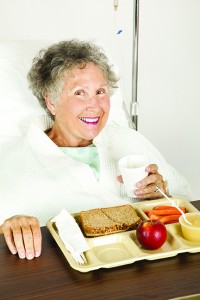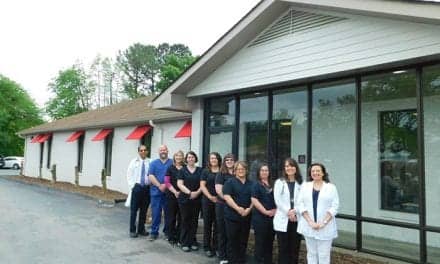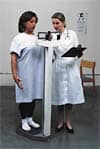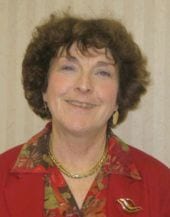When adding HST, it’s wise to adapt your marketing strategy to target patients who could not (or would not) spend the night in a sleep lab. Here are four markets to consider.
CHRONIC PAIN SUFFERERS
No matter the pain’s specific cause, the practices of sleep medicine and pain medicine are inextricably linked.
Compelling Cases:
- Patients on opiate therapy for chronic pain have an extremely high prevalence of sleep apnea and nocturnal hypoxemia.1
- Hours of reported sleep on the previous night is a significant predictor of the current day’s pain frequency, with less than 6 or more than 9 sleep hours associated with greater next-day pain.2
- Nonrestorative sleep is the strongest independent predictor of widespread pain onset among adults over the age of 50.3
At-home Advantages:
- If the patient is in severe pain and requires a caregiver, a home sleep test (HST) provides an option for the caregiver to easily be present during the hookup and testing.
- For patients on high-deductible insurance plans, they may already be having a hard time paying for pain control out-of-pocket and may be better able to afford the cost of an HST over an in-lab test.
- Depending on the sleep center’s appointment schedule, home testing may yield faster diagnosis, allowing for the patient to begin their therapy more quickly.
Marketing Strategy:
Patients with chronic pain turn to many avenues for relief, so raise your profile in several of these venues. Introduce yourself to all of the pain management clinics in your area. Ask local pharmacies if they will distribute an informational piece to patients who are filling opioid prescriptions. Follow patient online forums for disorders such as fibromyalgia and leave relevant comments as appropriate.
SURGERY CANDIDATES
It’s no secret that sleep apnea can add undue complications to any surgery.
Compelling Cases:
- Patients at high risk of OSA, as determined by the STOP-BANG questionnaire, have a higher rate of postoperative complications compared with patients at low risk.4
- Increasing depth of propofol anesthesia is associated with increased collapsibility of the upper airway.5
- A significant increase in AHI occurs frequently after major surgical procedures in the late postoperative period.6
At-home Advantages:
- The patient may already need to be away from home for several nights due to the surgery itself and might not be enthusiastic about yet another night away from home.
- In anticipation of surgery, the patient may desire to get as much sleep as possible, therefore they may be concerned about how well they will sleep in the strange surroundings of a sleep center.
Marketing Strategy:
Reach out to outpatient surgical centers to raise their awareness of your sleep services and how they may benefit the surgical center. If you are hospital-based, set up a meeting with the anesthesiology team and explain the benefits if they will insist their preoperative patients take the STOP-BANG questionnaire.
PREGNANT WOMEN
Poor sleep while pregnant not only endangers the woman, but endangers her child as well.
Compelling Cases:
- Pregnant women with obstructive sleep apnea (OSA) are more than five times as likely to die in the hospital than those without the sleep disorder.7
- Poor-quality sleep during the third trimester of pregnancy can increase the odds of weight gain and metabolic abnormalities in offspring once they reach adulthood.8
- One in two hypertensive pregnant women who habitually snore may have unrecognized OSA.9
At-home Advantages:
- Depending on how far along she is, the patient may not want to drive unnecessarily, especially if the nearest sleep center is far from her home.
- The patient may be saving all of her vacation days for after the baby arrives, and therefore not be willing to take time off work for driving to and from a sleep center.
- If the woman already has other children at home, HST eliminates the need to arrange for child care during her sleep study.
Marketing Strategy:
Pregnant women are enthusiastic about information on what’s best for their babies. Reach out to Lamaze instructors with an offer to do a question and answer session about pregnancy and sleep. Write a complimentary article for a parenting magazine with the caveat that it includes a link to your sleep center’s website. Create a flier for distribution in OB-GYN colleagues’ waiting rooms.
HOSPITALIZED PATIENTS
Transform inpatient rooms into virtual sleep labs to reach patients who are already on your hospital’s campus.
Compelling Cases:
- Patients with ongoing sleep problems have an almost twofold increased risk for all-cause hospitalizations and cardiovascular hospitalizations.10
- Prevalence of moderate to severe sleep apnea in multimorbid hospitalized elderly patients is high.11
- Previously diagnosed OSA is highly prevalent and undertreated in hospitalized patients, and the use of early computer alerts by respiratory therapists resulted in significantly more OSA patients receiving appropriate medical care, which resulted in significantly fewer experiencing hypoxemia.12
At-home Advantages:
- Inpatients may be hospitalized for medical concerns, prompting a multitude of tests and procedures. Trying to schedule them to visit a sleep lab after their stay may simply be too much for these patients to handle.
- The patient can start APAP while still in the hospital.
Marketing Strategy:
If you work in a hospital-based sleep lab, inpatients are low-hanging fruit for your HST strategy. Initiate talks to create a multidisciplinary approach to hospitalized patients, including having all patients take a sleep questionnaire upon intake.
Sree Roy is editor of Sleep Review. CONTACT [email protected]
References
1. Mogri M, Desai H, Webster L, Grant JB, Mador MJ. Hypoxemia in patients on chronic opiate therapy with and without sleep apnea. Sleep Breath. 2009;13:49-57.
2. Edwards RR, Almeida DM, Klick B, Haythornthwaite JA, Smith MT. Duration of sleep contributes to next-day pain report in the general population. Pain. 2008;137:202-207.
3. McBeth J, Lacey RJ, Wilkie R. Predictors of new-onset widespread pain in older adults: results from a population-based prospective cohort study in the UK. Arthritis Rheumatol. 2014:66(3):757-67.
4. Vasu TS, Doghramji K, Cavallezzi R, et al. Obstructive sleep apnea syndrome and postoperative complications: clinical use of the STOP-BANG questionnaire. Arch Otolaryngol Head Neck Surg. 2010;136(10):1020-4.
5. Eastwood PR, Platt PR, Shepherd K, et al. Collapsibility of the upper airway at different concentrations of propofol anesthesia. Anesthesiology. 2005;103:470-7.
6. Roggenbach J, Saur P, Hofer S, et al. Incidence of perioperative sleep-disordered breathing in patients undergoing major surgery: a prospective cohort study. Patient Saf Surg. 2014;8:13.
7. Louis JM, Mogos MF, Salemi JL, Redline S, Salihu HM. Obstructive sleep apnea and severe maternal-infant morbidity/mortality in the United States, 1998-2009. Sleep. 2014;37(5):843-849.
8. Khalyfa A, Mutskov V, Carreras A, et al. Sleep fragmentation during late gestation induces metabolic perturbations and epigenetic changes in adiponectin gene expression in male adult offspring mice. Diabetes. 2014 May 8 [Epub ahead of print].
9. O’Brien L, Bullough A, Chames M, et al. Hypertension, snoring, and obstructive sleep apnoea during pregnancy: a cohort study. BJOG. 2014 May 30 [Epub ahead of print].
10. Johansson P, Brostrom A, Sanderman R, Jaarsma T. The course of sleep problems in patients with heart failure and associations to rehospitalizations. J Cardiovasc Nurs. 2014 Jun 24 [Epub ahead of print].
11. Mazière S, Pepin JL, Siyanko N, et al. Usefulness of oximetry for sleep apnea screening in frail hospitalized elderly. J Am Med Dir Assoc. 2014;15(6):447.e9-14.
12. Evans RS, Flint VB, Cloward TV, et al. Early detection of hospitalized patients with previously diagnosed obstructive sleep apnea using computer decision support alerts. Stud Health Technol Inform. 2013;192:505-9.









